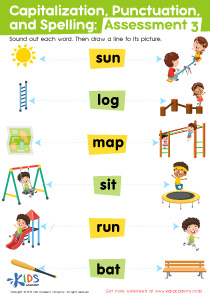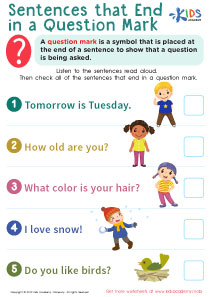Fine motor skills development Writing Worksheets for Ages 3-9
12 filtered results
-
From - To
Discover our engaging Fine Motor Skills Development Writing Worksheets designed for children ages 3-9. These worksheets support essential skills such as grip and control, hand-eye coordination, and precision, all crucial for successful writing. Featuring fun activities like tracing, doodling, and connecting dots, kids will enjoy honing their fine motor abilities while building confidence in their writing skills. Perfect for preschool and early grade classrooms, our worksheets are easy to print and are aligned with developmental milestones. Explore our collection to encourage your child's creativity and readiness for more advanced writing tasks in the future. Start your journey to learning today!
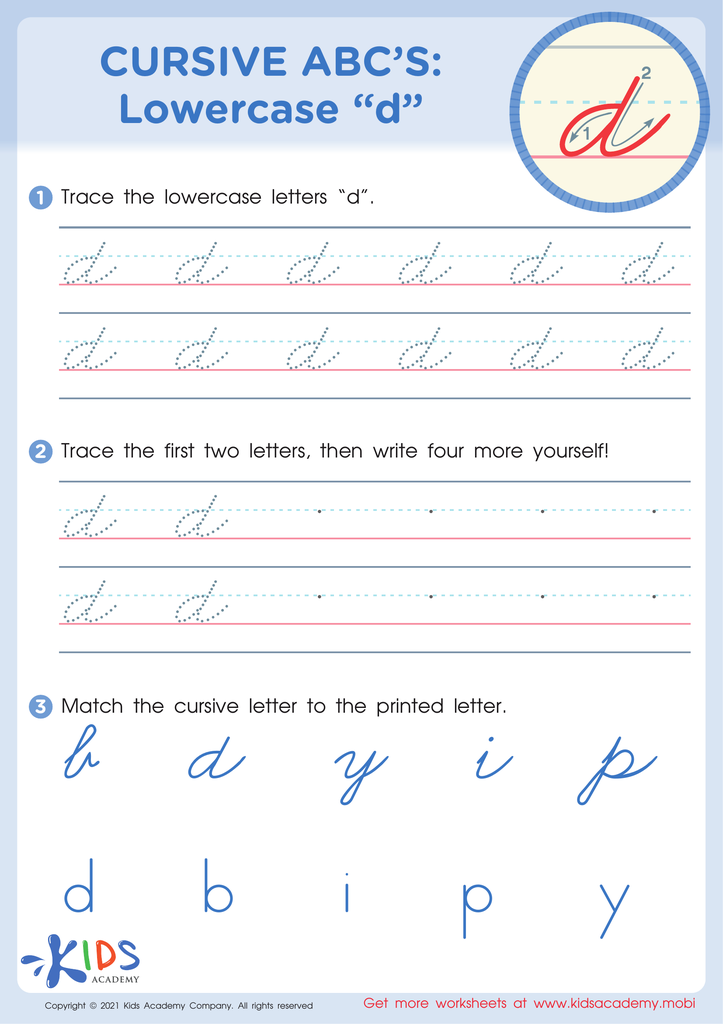

Cursive ABCs: Lowercase d
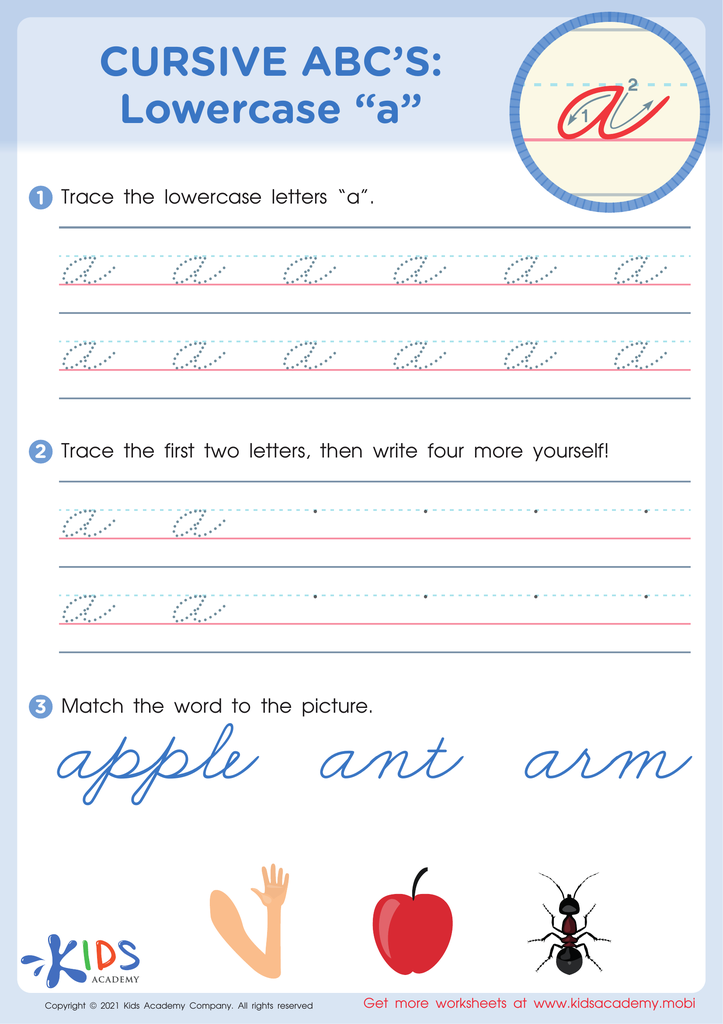

Cursive ABCs: Lowercase a
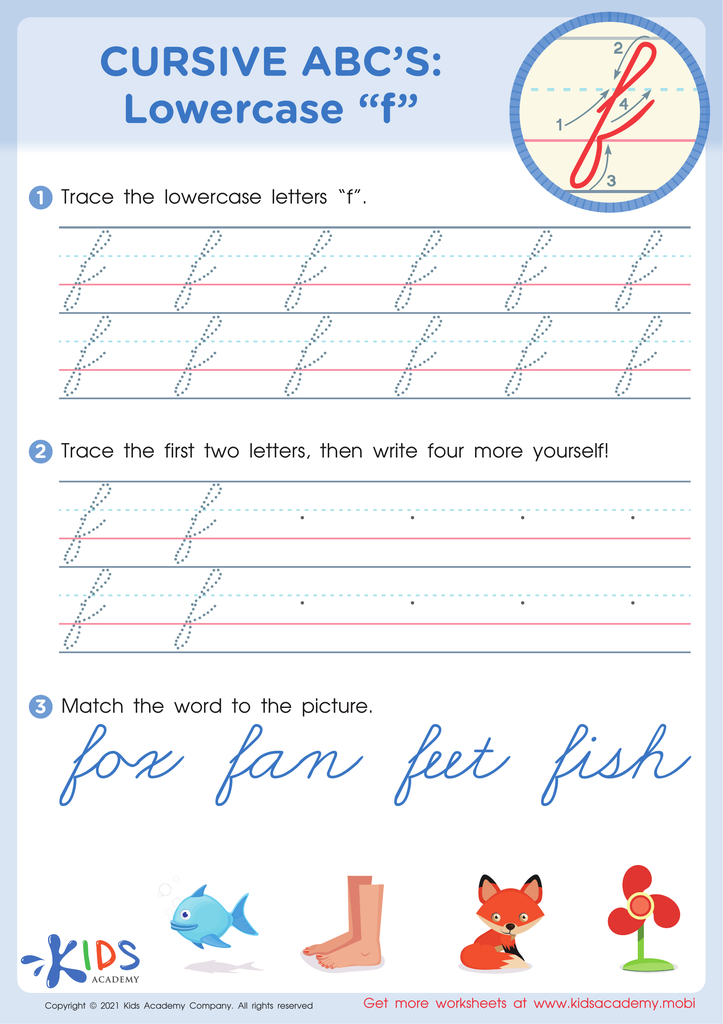

Cursive ABCs: Lowercase f
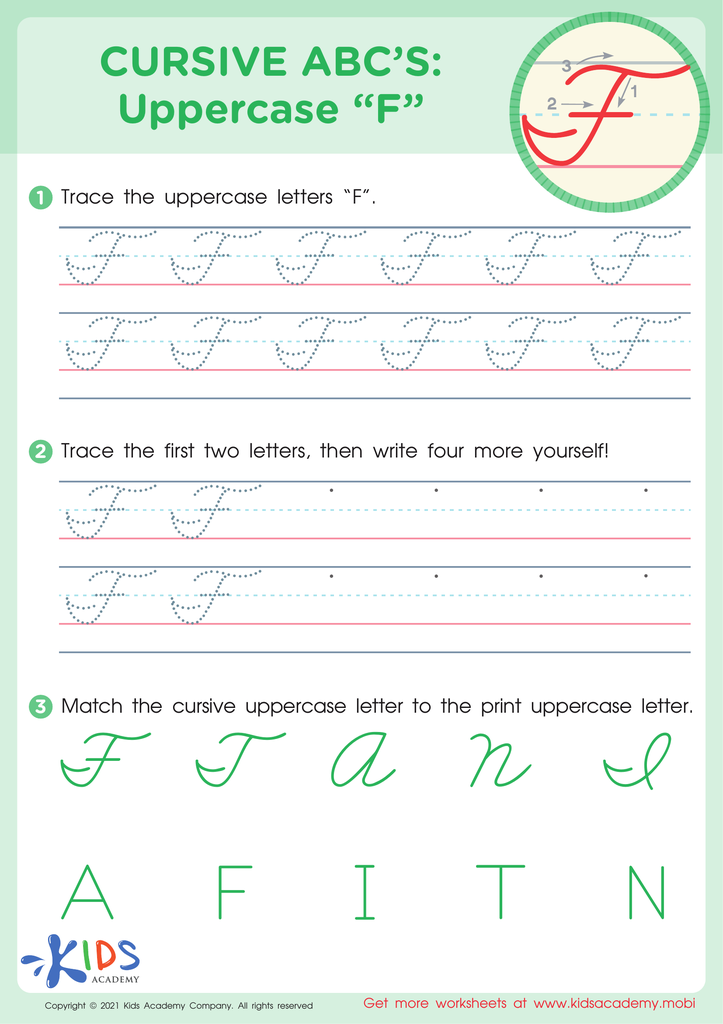

Cursive ABCs: Uppercase F
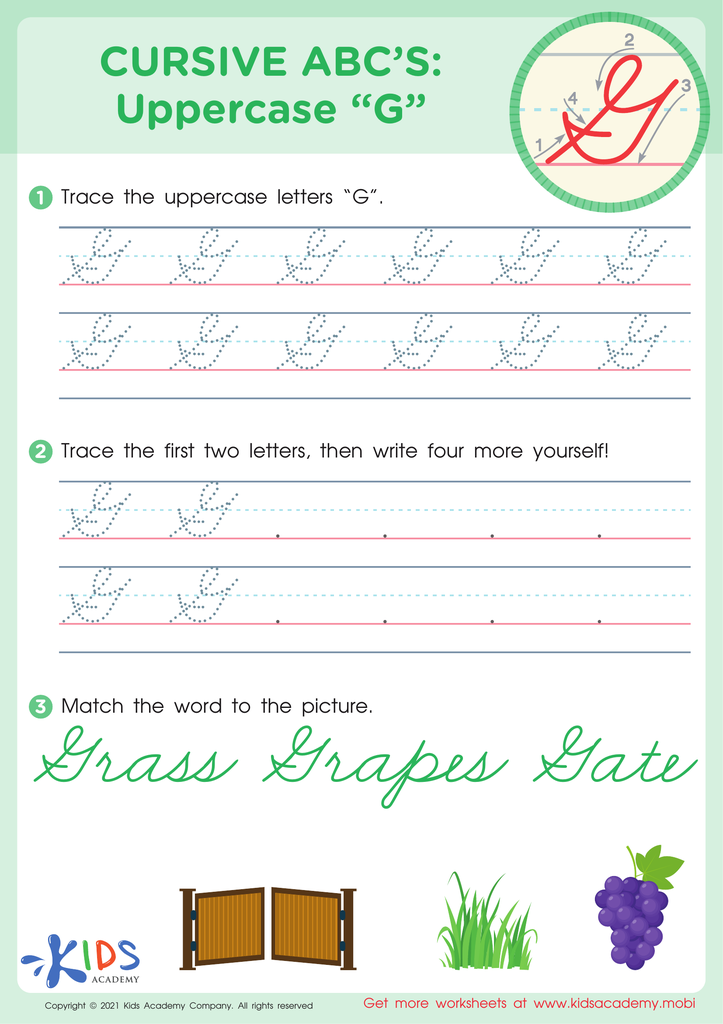

Cursive ABCs: Uppercase G
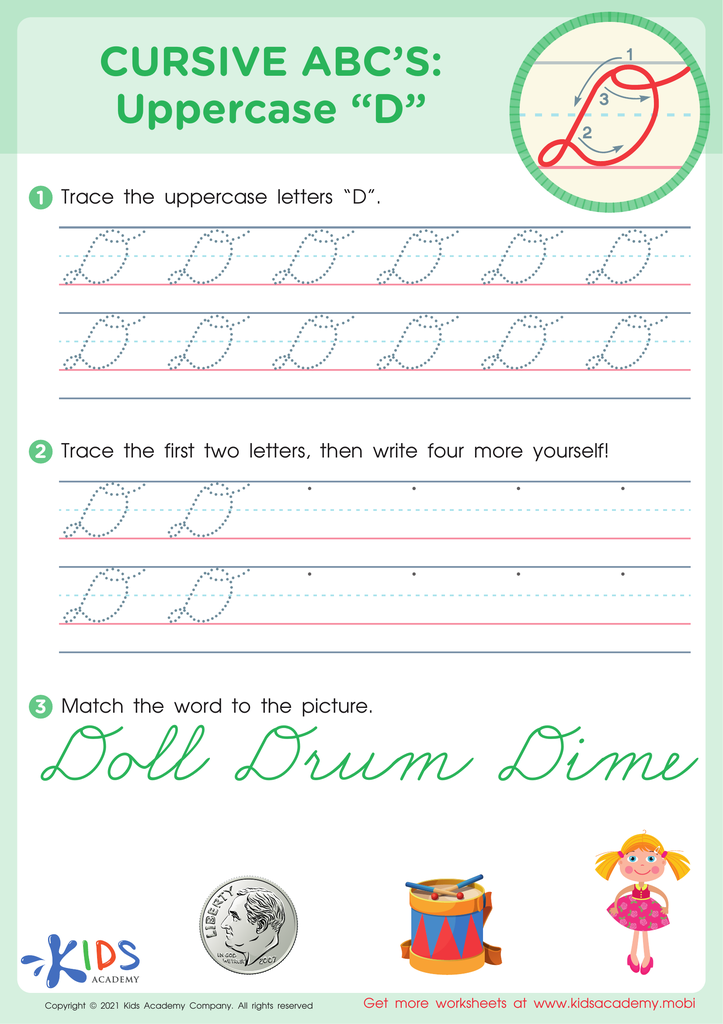

Cursive ABCs: Uppercase D
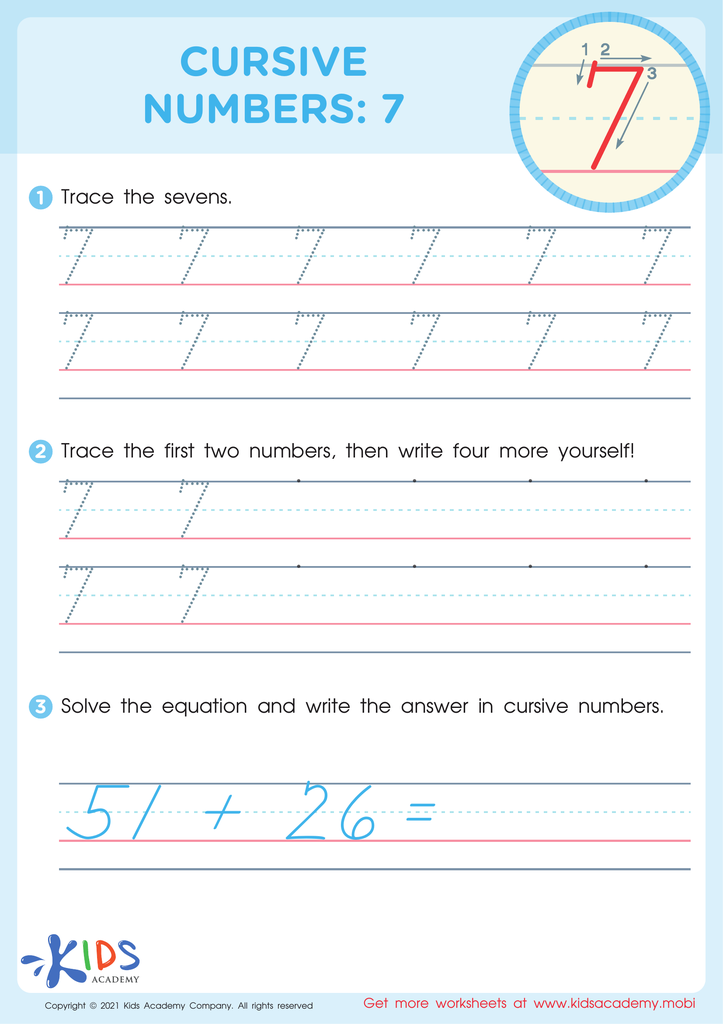

Cursive Numbers: 7 Worksheet
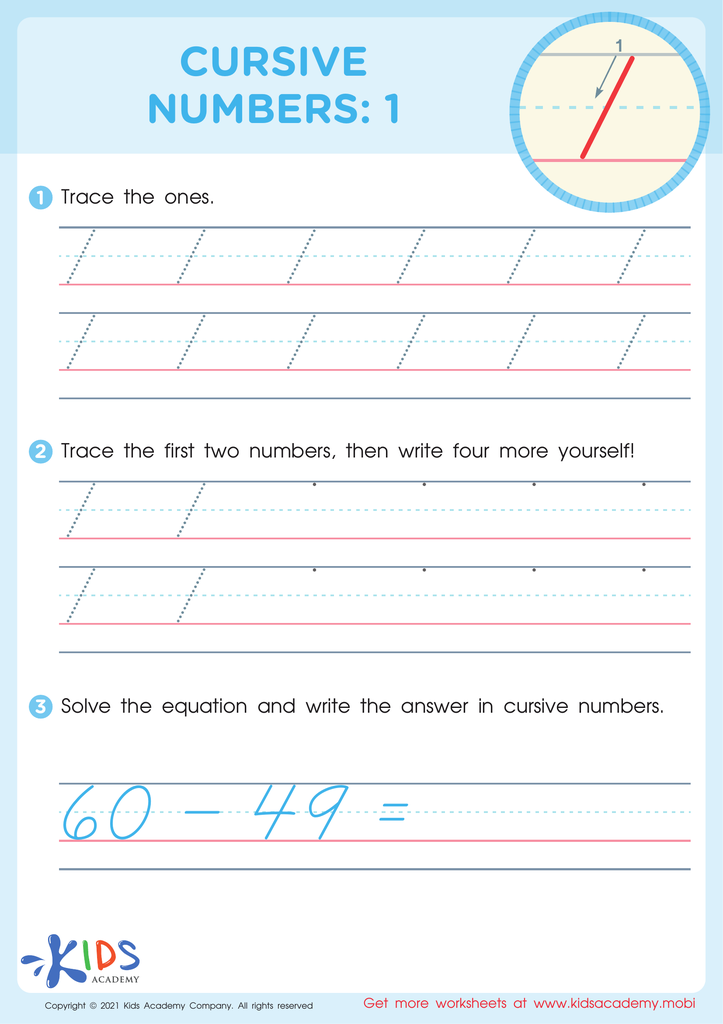

Cursive Numbers: 1 Worksheet
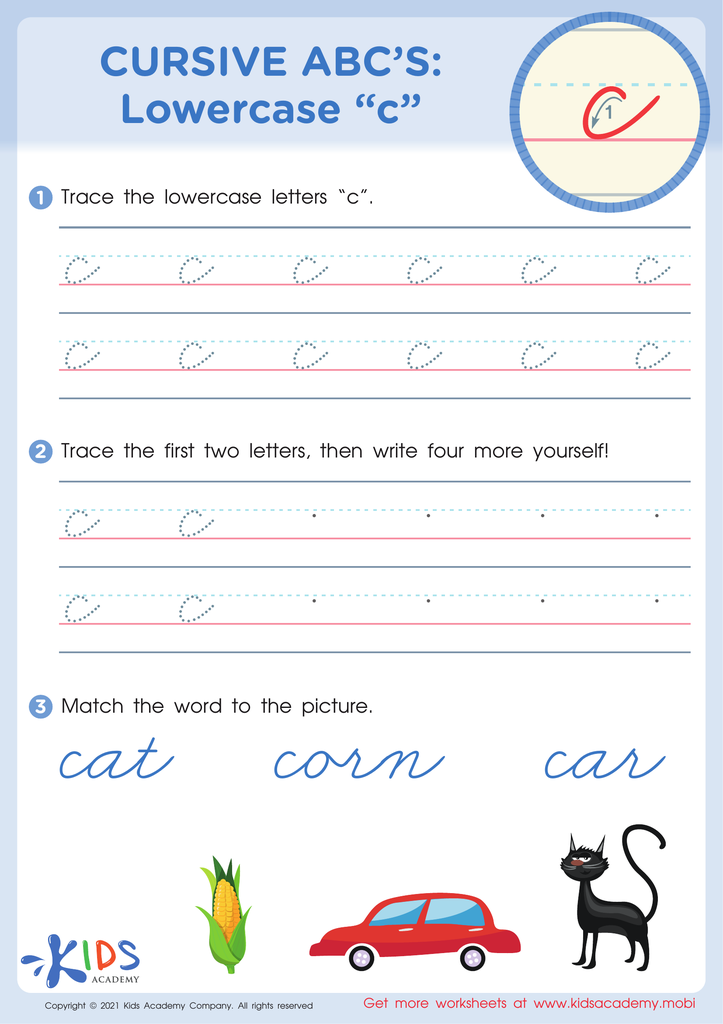

Cursive ABCs: Lowercase c


Cursive ABCs: Lowercase h
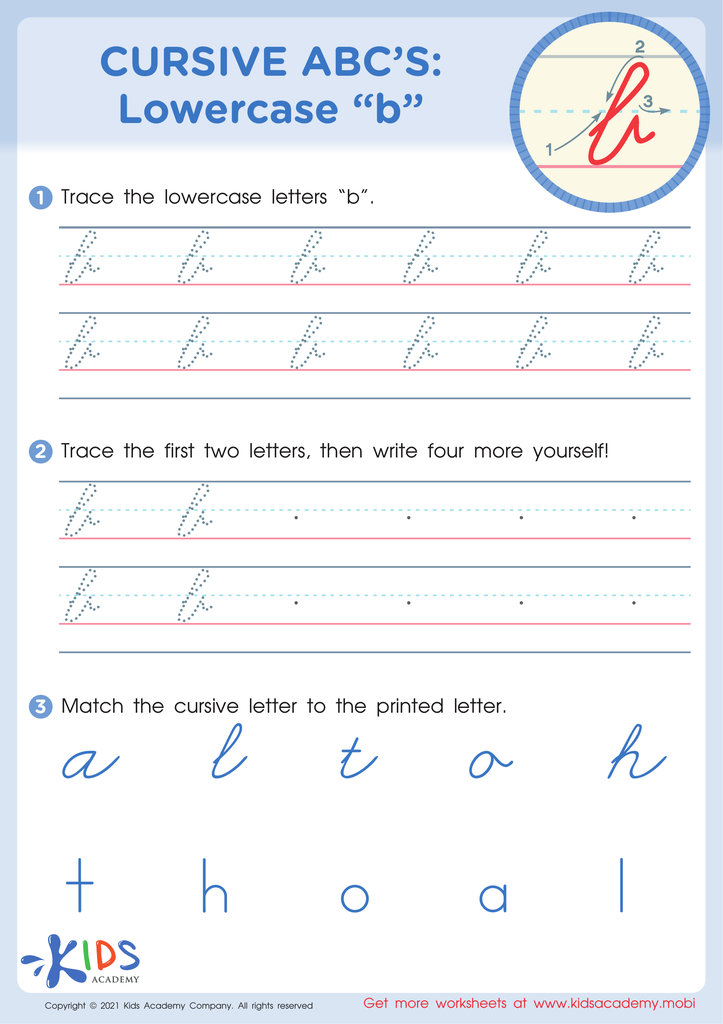

Cursive ABCs: Lowercase b
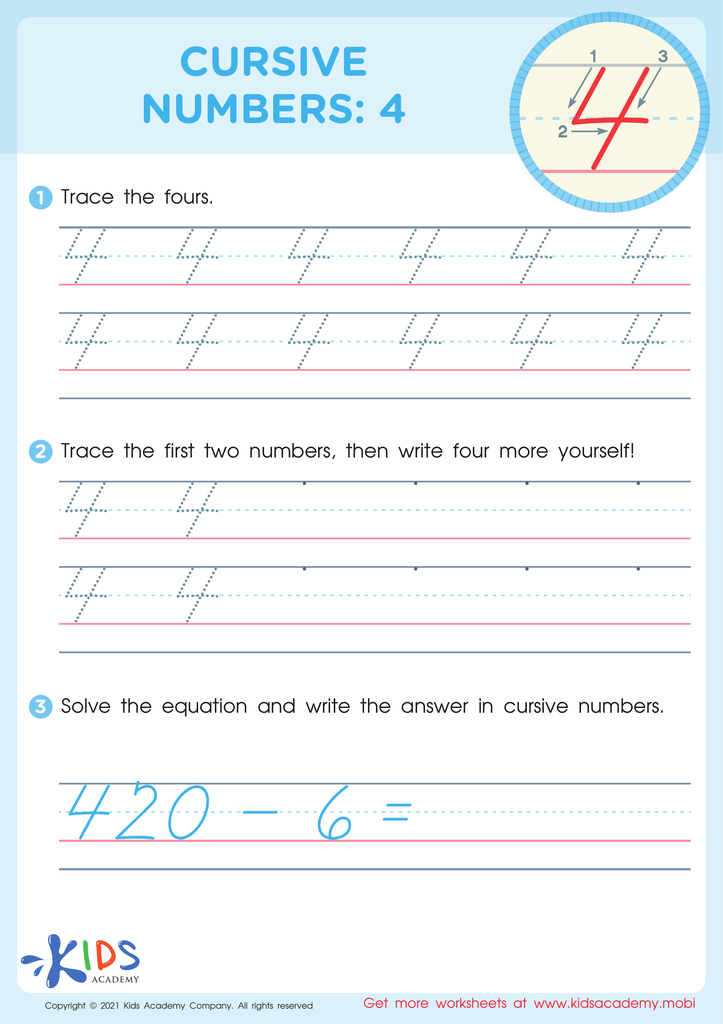

Cursive Numbers: 4 Worksheet
Fine motor skills development is crucial for children aged 3-9, and parents and teachers should prioritize its importance for several compelling reasons. Fine motor skills refer to the small movements that involve the coordination of hands and fingers, essential for tasks like writing, drawing, and manipulating small objects.
Firstly, fine motor skills are foundational for writing. As children learn to hold and control a pencil, they gain the ability to express their thoughts and creativity on paper. Proficient fine motor skills can also prevent frustration and promote a positive attitude towards writing, fostering a lifelong love for learning.
Additionally, the development of fine motor skills enhances hand-eye coordination, which is vital not only for academic tasks but also for everyday activities, such as using utensils or tying shoelaces. Activities that promote fine motor development, like arts and crafts, play with building blocks, and simple puzzles, strengthen cognitive skills and concentration.
Lastly, strong fine motor skills are linked to greater self-esteem and independence in children. When children can manage tasks independently, they feel a sense of accomplishment, which boosts their confidence. Thus, fostering fine motor skills is crucial for a child's overall development and success in both academic and personal domains.








